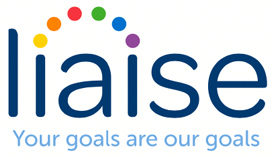Change can be both exciting and challenging for anyone, but for individuals with autism, it can bring unique difficulties. Understanding and addressing their specific needs during times of change is crucial to providing people with autism with the tailored support they require.
The challenges people with autism face in dealing with change can be attributed to various factors. Communication difficulties can make it challenging for them to understand and cope with changes in expectations or plans. The structured and predictable nature of their environment provides them with a sense of security, and making changes to their routines is often overwhelming or stressful.
Many people with autism thrive on routine and repetition, making it difficult for them to embrace or navigate new situations. These challenges can manifest in many different ways, such as increased anxiety, behavioural difficulties, struggles with transitions, or difficulties in social situations.
Here we explore the challenges people with autism often face and discuss strategies that can help them effectively navigate and adapt to new situations.
Understanding Autism and Change
Change can pose significant challenges for people with autism due to a combination of factors that affect their experience. Sensory sensitivities, communication challenges, rigid thinking patterns, and executive functioning differences all contribute to the challenges people with autism face when confronted with change.
Some of the key aspects that impact their ability to navigate change include:
- Sensory Sensitivities: Heightened sensitivity to sensory stimuli, making changes in the environment overwhelming and distressing.
- Communication Challenges: Difficulty expressing themselves and understanding explanations about upcoming changes, leading to increased uncertainty.
- Rigid Thinking Patterns: Strong preference for sameness and predictability, making it challenging to adapt to changes in routines or expectations.
- Executive Functioning Differences: Difficulties in planning and organisational skills, making it harder to manage and navigate changes effectively.
Types of Change and Their Impact
Change comes in various forms, and for individuals with autism, it can present unique challenges. Transitions, routine disruptions, environmental changes, and social adjustments can all have a profound impact on their lives. Understanding how different types of change can affect individuals with autism is crucial in providing the support and strategies they need to navigate these transitions successfully.
These are some of the various types of change and their specific impacts on people with autism:
Transitions
Transitioning from one phase of their life to another can be particularly challenging for individuals with autism. Sudden changes in activities or routines disrupt their sense of predictability and familiarity, causing distress or difficulty in shifting attention.
For example, moving from free play to structured learning activities in a classroom setting may result in increased anxiety and resistance to change. Similarly, transitioning between environments, such as moving from home to school or from one classroom to another, can be overwhelming.
Moving into residential care or supported living is another significant transition that can have a profound impact on people with autism. This transition requires people with autism to adjust to a completely new living situation, which can cause heightened anxiety, stress, and the need for additional support during this critical period in their lives.
Routine Disruptions
People with autism rely on established daily routines to provide a sense of order and predictability. Changes in these routines can be particularly unsettling and distressing for them. Even unexpected changes to simple aspects of their daily routines, such as meal times, bedtime routines, or the order of activities, can result in heightened anxiety and a sense of unpredictability. Maintaining a structured and consistent routine is vital for their well-being and ability to navigate daily life effectively.
Unexpected schedule changes pose additional challenges for individuals with autism. They often rely on structured schedules to navigate their day, and any sudden alterations, such as cancelled or rescheduled appointments, can lead to increased anxiety and difficulty adapting.
Environmental Changes
New or unfamiliar environments can be overwhelming for individuals with autism due to sensory and environmental differences. Moving to a new home, travelling to unfamiliar places, or visiting different sensory-rich environments can trigger sensory sensitivities and heighten stress or anxiety. Changes in sounds, smells, lighting, or spatial layouts can overload their sensory system, making it challenging for them to process and adapt to the new surroundings.
Even within familiar environments, changes in sensory stimuli can still have an impact. Something as simple as rearranging furniture, introducing new decorations, or altering the lighting can disrupt their sense of familiarity and comfort. These seemingly minor changes can lead to heightened stress and anxiety, as people with autism thrive on consistency and predictability within their environment.
Social Adjustments
Changes in social settings or relationships often pose significant challenges for people with autism. Transitions from familiar social groups or classrooms to new ones can lead to difficulties in understanding and interpreting social cues, making it harder for them to form new connections and adapt to social norms.
Strategies for Supporting People with Autism Through Change
Major life transitions can be particularly challenging for individuals with autism. Whether it’s starting school, changing classrooms, transitioning to adulthood, or moving into residential care, these pivotal periods require careful guidance and support.
Here are some strategies for people individuals with autism during these transitions:
- Early Planning and Collaboration: Begin planning for transitions well in advance, allowing time for thorough preparation and appropriate support. Collaborate with parents, educators, therapists, and professionals to develop a comprehensive and coordinated approach. Establish open lines of communication and regular meetings to share information and address concerns.
- Individualised Transition Plans: Ensure that all transition plans consider the specific needs, goals, strengths, challenges, interests, and preferences of the individual. Incorporate strategies such as visual supports, social stories, and gradual exposure to help them understand and adjust to the upcoming changes.
- Familiarisation and Orientation: Provide opportunities for the individual to become familiar with new settings, routines, and expectations. Conduct orientation visits to new schools, classrooms, or work environments to create a sense of familiarity and reduce anxiety.
- Social and Emotional Support: Offer opportunities for people with autism to practise and develop social interactions, self-regulation, and self-advocacy skills. Encourage them to form connections with their peers and provide counselling or support services to address emotional needs during the transition.
- Transition Support Team: Establish a transition support team consisting of professionals, educators, and parents who work collaboratively to ensure a smooth transition. This team can provide ongoing support, monitor progress, and make necessary adjustments to the transition plan.
- Continuity and Consistency: Strive to maintain continuity and consistency during transitions. Gradual transitions, overlapping support services, and consistent communication can help alleviate anxiety and promote a successful transition.
- Post-Transition Support: Recognise that the transition process extends beyond the initial period. Offer ongoing support and monitoring to ensure the individual’s continued success and well-being.
Transition Planning from Liaise
At Liaise, we understand the importance of flexible transition plans that prioritise the safety and stability of young individuals with support needs as they transition into adulthood. Our dedicated team works closely with your family to develop personalised support plans, guided by our core values: Positive, Progressive, and Personal support.
We recognize that circumstances can change over time, so we regularly review and adjust individual care plans to ensure they continue to meet evolving needs. Our ultimate goal is to provide young people with the necessary support and resources to make a successful transition into adulthood while empowering them to achieve their personal goals and aspirations.
We are here to support you and your family every step of the way. If you would like to learn more about how we can support your loved one as they transition to adult services, do not hesitate to contact us. We look forward to hearing from you.





